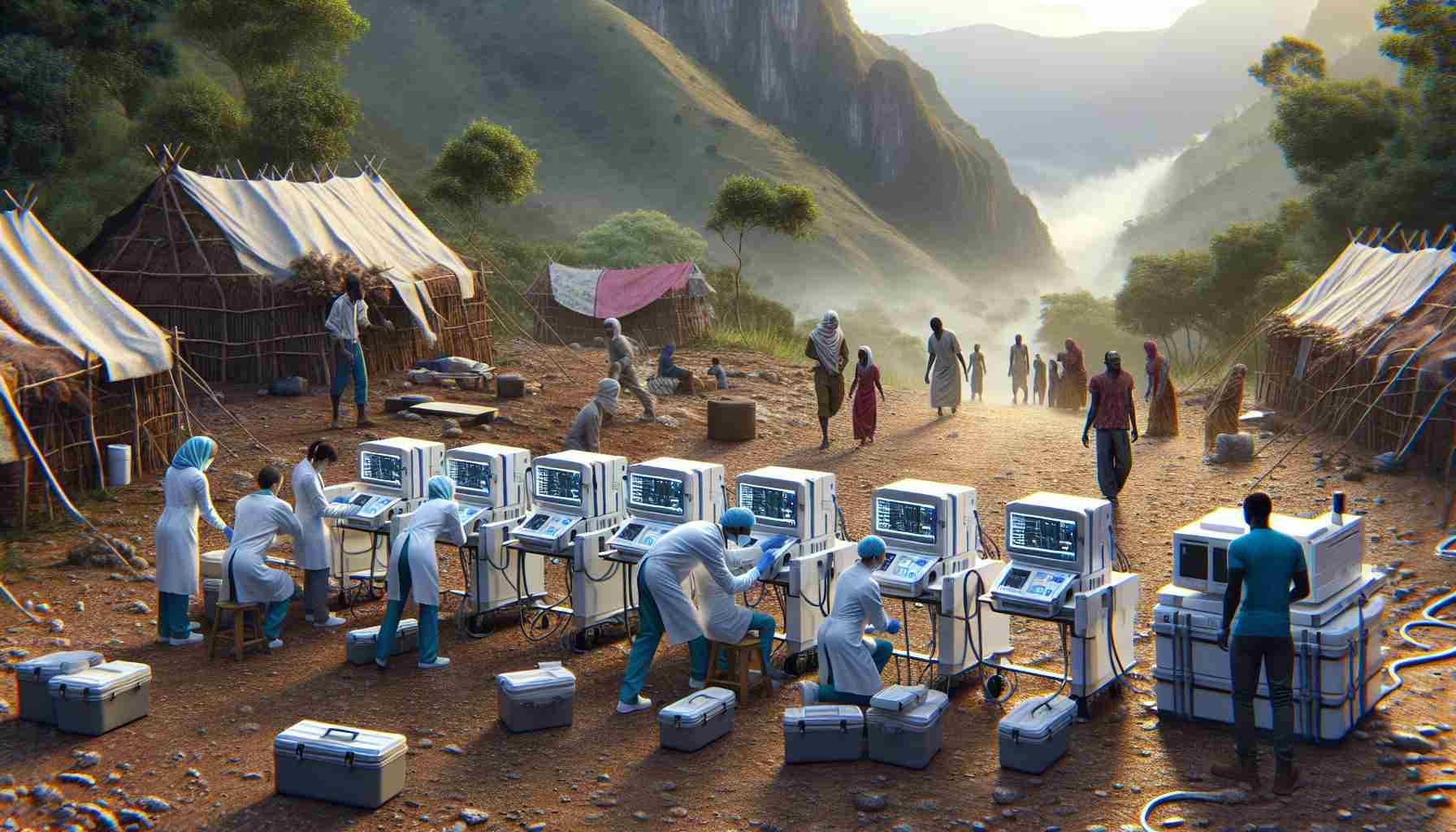In a groundbreaking development for tuberculosis (TB) management, healthcare professionals are leveraging cutting-edge technologies to conduct screenings in remote and vulnerable communities, radically transforming the landscape of healthcare accessibility. Traditionally, individuals from tribal communities had to endure arduous journeys to hospitals and clinics for TB scans and sputum collection, leading to financial losses and limited healthcare access. However, with the advent of handheld X-ray devices and AI-driven scanning tools, medical practitioners can now carry out immediate on-the-spot scans, significantly enhancing TB detection and treatment outcomes.
The Indian Council for Medical Research (ICMR) has embarked on a multi-centric study across various states, including Andhra Pradesh, Madhya Pradesh, Kerala, Karnataka, Odisha, and Meghalaya, to deploy handheld X-ray devices for TB screenings. Dr. Rajlakshmi Chepuru and her team traverse remote regions in Andhra Pradesh, equipped with a 10kg backpack housing a handheld X-ray apparatus. They perform scans on approximately 100 suspected TB patients each day, identifying indicative lesions. Subsequently, these X-rays are examined by radiologists or physicians, and upon lesion confirmation, the state TB team conducts sputum tests and initiates treatment. This approach saves significant time and resources for tribal populations, obviating the need for prolonged travels to healthcare facilities.
Similarly, in Nagaland, Dr. James Tinenlo Katiwa utilizes qure.ai’s qXR, an AI-powered scanning tool, to screen for TB. This tool, which eliminates the necessity for a radiologist, can analyze X-rays using a smartphone camera. Dr. Tinenlo converts the X-ray into digital format using his mobile phone camera, and the qXR app subsequently assesses the X-ray for TB indications. This technological innovation has played a crucial role in identifying latent TB cases and expediting treatment initiation.
In Tamil Nadu, Deeptek’s ‘Genki’ has been widely adopted to identify unreported TB incidences. This mobile diagnostic unit integrates a digital X-ray machine with AI technology. Since its implementation, numerous X-rays have been taken, leading to the diagnosis of numerous TB cases within the community. Dr. K Ravishankar, the project overseer, underscores the efficacy of Genki as a screening tool, enabling the early identification of potential TB cases before symptomatic onset.
The integration of these state-of-the-art technologies in TB management signifies a potential healthcare revolution in remote regions. These advancements facilitate expedited and precise diagnoses, ensuring timely treatment and alleviating the strain on public healthcare systems. Furthermore, the utilization of AI negates the requirement for specialized radiologists, rendering TB screenings more accessible and cost-efficient.
Frequently Asked Questions (FAQs)
-
Q: What is TB?
A: Tuberculosis (TB) is an infectious disease caused by the bacterium Mycobacterium tuberculosis, primarily affecting the lungs and transmittable through respiratory droplets. -
Q: How do handheld X-ray devices function?
A: Handheld X-ray devices emit low doses of radiation, enabling healthcare providers to perform on-site scans in remote areas to detect TB-related lesions. -
Q: What does AI-enabled scanning entail?
A: AI-enabled scanning employs artificial intelligence to analyze medical images, like X-rays, for disease detection and diagnosis, reducing dependence on specialized radiologists. -
Q: Why is remote TB screening crucial?
A: Remote TB screening is vital for ensuring early detection and prompt treatment, particularly for individuals with limited healthcare access, thereby curbing disease transmission and enhancing patient outcomes. -
Q: How can these technologies aid in TB eradication?
A: The application of handheld X-ray devices and AI-driven scanning tools expedites accurate diagnoses, facilitating immediate treatment initiation and bolstering TB eradication endeavors.
Sources:
Aside from the strides in TB management delineated in the original article, it is imperative to underscore the industry and market projections for these innovative technologies within the healthcare and TB eradication realms.
The global healthcare sector is increasingly embracing technological advancements to enhance diagnostics, therapeutics, and patient care. The market for handheld X-ray devices, AI-driven scanning tools, and other innovative healthcare technologies is slated for substantial expansion in the forthcoming years. According to Allied Market Research, the global digital X-ray market is anticipated to reach $13.32 billion by 2027, manifesting a 5.6% compound annual growth rate (CAGR) during the forecast period.
The market for AI-enabled scanning tools, specifically in radiology and medical imaging domains, is poised for rapid growth as well. A report by MarketsandMarkets envisages the global AI in healthcare market to ascend to $45.2 billion by 2026, with a CAGR of 44.9% from 2019 to 2026.
These prognostications underline the burgeoning demand for and adoption of cutting-edge healthcare technologies, including handheld X-ray devices and AI-driven scanning tools. The capacity of these technologies to enhance healthcare accessibility and bolster disease management, such as TB eradication, is propelling market growth.
However, alongside the opportunities, challenges and quandaries accompany the incorporation of these technologies in the healthcare sector. One critical issue pertains to the requisite training of healthcare personnel in effectively utilizing these devices and tools. Ensuring accurate interpretation of results and averting misdiagnoses necessitates comprehensive training for healthcare workers in the proper use of handheld X-ray devices and AI algorithms.
Furthermore, affordability emerges as a significant hurdle, particularly in underserved settings. Albeit offering substantial benefits in terms of accessibility and efficiency, the initial investment and maintenance costs associated with handheld X-ray devices and AI-driven scanning tools may pose financial hurdles for inadequately funded healthcare facilities and remote populations. Tackling the affordability aspect of these technologies in resource-constrained settings holds pivotal importance for their widespread adoption and impact in TB management and overall healthcare delivery.
Moreover, the deployment of these technologies engenders concerns regarding data privacy and security, as medical images and patient information are…
The source of the article is from the blog japan-pc.jp
